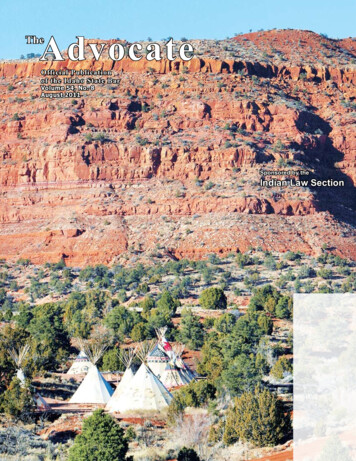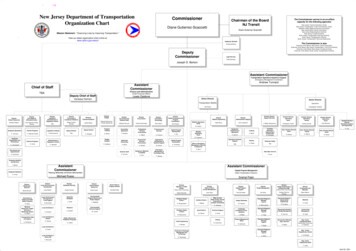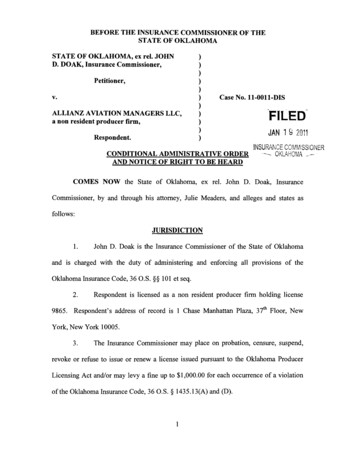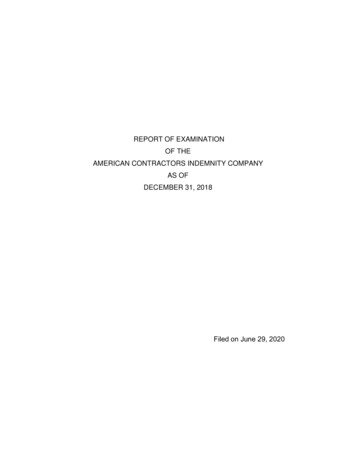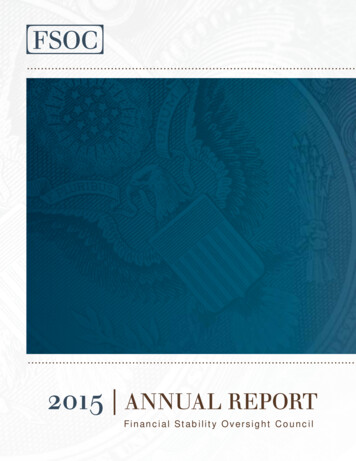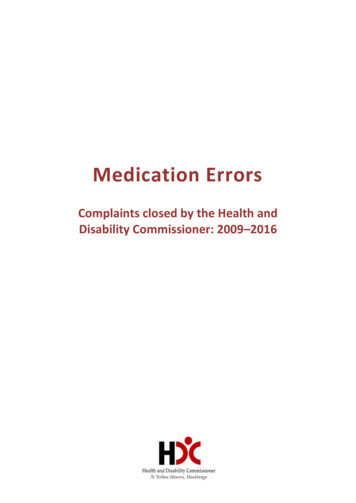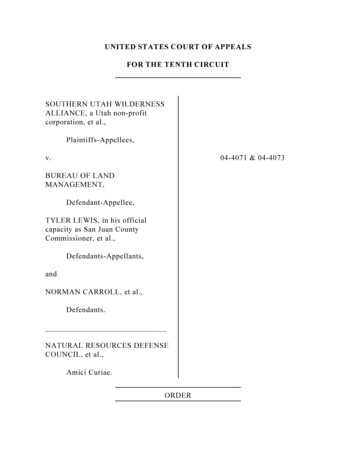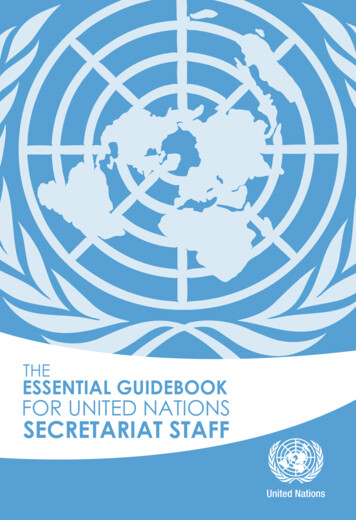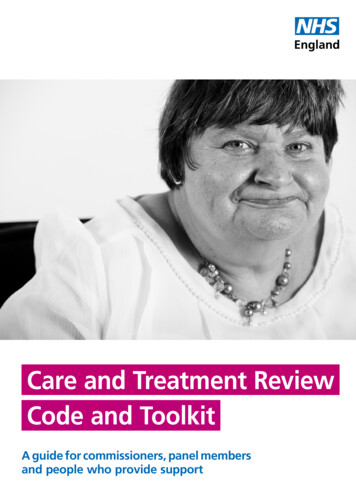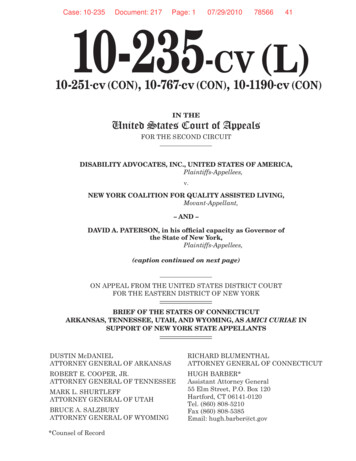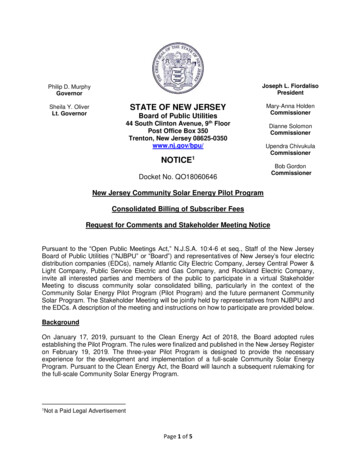
Transcription
Joseph L. FiordalisoPresidentPhilip D. MurphyGovernorSTATE OF NEW JERSEYSheila Y. OliverLt. GovernorBoard of Public Utilities44 South Clinton Avenue, 9th FloorPost Office Box 350Trenton, New Jersey 08625-0350www.nj.gov/bpu/Mary-Anna HoldenCommissionerDianne SolomonCommissionerUpendra ChivukulaCommissionerNOTICE1Docket No. QO18060646Bob GordonCommissionerNew Jersey Community Solar Energy Pilot ProgramConsolidated Billing of Subscriber FeesRequest for Comments and Stakeholder Meeting NoticePursuant to the “Open Public Meetings Act,” N.J.S.A. 10:4-6 et seq., Staff of the New JerseyBoard of Public Utilities (“NJBPU” or “Board”) and representatives of New Jersey’s four electricdistribution companies (EDCs), namely Atlantic City Electric Company, Jersey Central Power &Light Company, Public Service Electric and Gas Company, and Rockland Electric Company,invite all interested parties and members of the public to participate in a virtual StakeholderMeeting to discuss community solar consolidated billing, particularly in the context of theCommunity Solar Energy Pilot Program (Pilot Program) and the future permanent CommunitySolar Program. The Stakeholder Meeting will be jointly held by representatives from NJBPU andthe EDCs. A description of the meeting and instructions on how to participate are provided below.BackgroundOn January 17, 2019, pursuant to the Clean Energy Act of 2018, the Board adopted rulesestablishing the Pilot Program. The rules were finalized and published in the New Jersey Registeron February 19, 2019. The three-year Pilot Program is designed to provide the necessaryexperience for the development and implementation of a full-scale Community Solar EnergyProgram. Pursuant to the Clean Energy Act, the Board will launch a subsequent rulemaking forthe full-scale Community Solar Energy Program.1Nota Paid Legal AdvertisementPage 1 of 5
On October 2, 2020, the Board issued an Order approving the Program Year 2 (PY2) ApplicationForm for the Pilot Program. As part of the same Order, the Board directed the EDCs to work withBoard Staff to develop options for implementing consolidated billing for community solar, wherethe customer pays both their normal electric utility charges and community solar subscriber feesthrough a single bill. As part of the process, the Board directed the EDCs and Staff to includeconsideration of what is currently done by EDC affiliates in other states. The EDCs were directedto present actionable recommendations for the implementation of consolidated billing in a reportto the Board no later than February 26, 2021. The EDCs have requested an extension of thereport’s due date to provide sufficient time for stakeholder engagement and the development ofa consolidated billing option for community solar.Stakeholder MeetingIn order to inform the development of this report, the EDCs seek stakeholder feedback regardingthe questions listed below. A virtual stakeholder meeting will be held on:Date: Thursday March 25, 2021Time: Beginning at 1:00 p.m.Please register for the meeting no later than Wednesday, March 24 at 5:00 p.m. via the linkbelow. If you wish to speak, please identify yourself as a speaker when registering. Speakers thatregister will be called first.Registration Link: 39308643852After registering, you will receive a confirmation email containing information about joining thewebinar and checking your system requirements. We encourage all webinar attendees to checktheir systems in advance of the meeting to ensure a smooth connection.Written CommentsWritten comments are also encouraged and must be submitted electronically either:1.2.To Aida Camacho at board.secretary@bpu.nj.gov; orThrough the Board’s External Access Portal upon obtaining a MyNewJersey PortalID. Once you establish a MyNewJersey account, an authorization code is requiredwhich you can request by emailing the NJBPU’s IT Helpdesk atBPUITHELPDESK@bpu.nj.gov. If you have questions about the e-Filing portal,please consult NJBPU’s e-Filing FAQs.Comments must be in either Word or PDF format and should include in the subject line“Comments regarding Docket No. QO18060646, Community Solar Consolidated Billing ofSubscriber Fees,” along with the last name of the author and the name of their company ororganization.All comments are due by 5:00 p.m. on Friday April 9, 2021.Page 2 of 5
Please note that these comments are considered “public documents” for purposes of the State’sOpen Public Records Act. Commenters may identify information that they seek to keepconfidential by submitting them in accordance with the confidentiality procedures set forth inN.J.A.C. 14:1-12.3.Stakeholder QuestionsQuestion 1: In New Jersey, customers who purchase their electricity supply from a Third PartySupplier (TPS) are typically billed by their EDC. Known as Utility Consolidated Billing, thecustomer receives a single bill that includes supply charges and related taxes from its TPS anddelivery charges and related taxes and charges from its utility. Occasionally, in NJ and in otherjurisdictions, dual billing is employed where a customer receives a bill from the customer’s utilitycompany that includes only the utility’s charges and a separate bill from the customer’s TPS thatincludes only the TPS charges. In other jurisdictions, the TPS sends the utility bill to the customer,which contains all of the utility’s relevant charges. This billing methodology is sometimes calledTPS Consolidated Billing.What lessons can be drawn from consolidated billing for TPS customers with respect to itspotential application to community solar? What are the advantages or disadvantages of UtilityConsolidated Billing, TPS Consolidated Billing and dual billing as they apply to community solar?Question 2: Do you recommend implementation of some form of consolidated billing forcommunity solar projects? If so, do you recommend Utility Consolidated Billing, or third partyprovision of consolidated billing for community solar subscriber fees (Subscriber OrganizationConsolidated Billing)? Please consider this question from the perspective of billing implementationand administration, community solar project financing, and subscriber (customer) protection.Question 3: Please describe in detail how your proposed method of consolidated billing wouldwork and the benefits you believe would be achieved by the use of consolidated billing forcommunity solar. If you are or represent a community solar developer or subscriber organization,please speak specifically to your experience. Please address all related issues, including thefollowing: Would the bill be sent by the utility (Utility Consolidated Billing) or the subscriberorganization (Subscriber Organization Consolidated Billing)?How would your proposal address customer nonpayment of bills, partial payment of bills,and late payment of bills? In cases of partial payment of bills, which portion of the billshould the payment be allocated towards?Should customers be dropped from consolidated billing for late payments?Discuss any purchase of receivables issues.Discuss any issues relating to consumer credit.Should there be a fee using consolidated billing and, if yes, what should it be?Discuss any consumer protection implications of utilizing consolidated billing forcommunity solar, including data privacy and data protection.How would customer specific data be exchanged?Alternatively, please address why you and/or your organization prefer dual billing.Page 3 of 5
Question 4: If you are or represent a community solar developer or subscriber organization,please describe in detail the terms of the agreement between the subscriber and the subscriberorganization. In particular, please explain the following: What are the fees and contract terms for subscribers?Are the fees and contract terms consistent among all subscribers? Does it differ bycustomer class?Do subscriber organizations intend to offer guaranteed savings to the subscriber?Do subscriber fees vary each month?Question 5: Do any subscriber organizations currently use consolidated billing for communitysolar subscriber fees in other jurisdictions? If so, please identify the jurisdictions and explain thedesign of the billing framework, being sure to address the issues identified in Question 2 and 3above.Question 6: Are subscriber organizations paying an administrative fee to EDCs for the use ofconsolidated billing of subscriber fees in other jurisdictions? If so, how is it structured? If not, howdoes the EDC recover those costs? Please provide your recommended method of cost recovery.Question 7: Should consolidated billing of community solar subscriber fees only be available toprojects that provide a guaranteed monthly savings to subscribers? If not, would the provider ofconsolidated billing be expected to charge subscribers for their community solar participationresulting in an amount due greater than the amount due for electric service? Should this result bepermitted for low- to moderate-income (LMI) customers?Question 8: Please provide comments on the following framework for utility consolidated billingof subscriber fees, which is currently being implemented in New York:a. Utility consolidated billing of subscriber fees is optional for community solar projects. If aproject chooses utility consolidated billing of subscriber fees, all subscribers enrolled inthat project are billed via utility consolidated billing (with the exception of one anchorsubscriber per project).b. In order to participate in utility consolidated billing, all subscribers enrolled in the projectmust receive a percentage of their original community solar credit on their bills eachmonth. Currently, this minimum percentage is five percent (5%) in New York.c. The subscriber fee is a percentage of the subscriber’s original community solar credit eachmonth. The dollar amount of the subscriber fee varies each month based upon theunderlying community solar credit.o Example: The subscriber fee is 90% of a customer’s community solar credit. Onthe monthly bill, the customer receives 10% of their credit. The remaining 90% ofthe credit is remitted by the EDC to the subscriber organization less theadministrative fee retained by the EDC.d. At least 60 days prior to operating under a consolidated billing framework, the communitysolar project owner must provide the EDC with the percentage of the subscribercommunity solar credits that is available to be applied to the subscribers’ bills.e. The same percentage must be applied to all subscribers for the same project (with theexception of an anchor subscriber, if applicable, that will receive its entire community solarcredit on its utility bill and is billed by the community solar project owner for subscriptionfees). The percentage can change no more frequently than every six (6) months.Page 4 of 5
Subscriber organizations must agree to use the EDC’s communication tool for sharingsubscriber percentage information.g. The EDC retains a portion of the subscriber fee to compensate for their implementationand administrative costs associated with utility consolidated billing. This results in theSubscriber Fee percentage in item “c” above being reduced.h. The EDC receives timely recovery of subscriber credits through a surcharge or similarmechanism.f.Question 9: If you disagree with any portion of the framework in Question 8, please describe indetail the framework you would support (or refer to your response to Question 3, as relevant).Include specific examples from other jurisdictions, if possible.Question 10: In the case of Utility Consolidated Billing, if you are a community solar subscriptionorganization, should you opt to participate in Utility Consolidated Billing would you maintain backup billing procedures to bill customers who fail to pay the EDC for their community solarsubscription? What other options would you suggest to address the risk of non-payment bycustomers?Question 11: What are the potential challenges to implement consolidated billing for communitysolar? How can these challenges be addressed?Question 12: If Utility Consolidated Billing were available, how would subscriber billing inquiriesbe handled? Would subscriber inquiries regarding subscriber fees and/or community solar creditsbe handled by the subscribing entity or the developer, or would the utility be required to take onthat role?Question 13: If Utility Consolidated Billing were available, how would subscriber billinginformation be provided to the utility?Aida Camacho-WelchBoard SecretaryDated: March 11, 2021Page 5 of 5
community solar projects? If so, do you recommend Utility Consolidated Billing, or third party provision of consolidated billing for community solar subscriber fees (Subscriber Organization Consolidated Billing)? Please consider thi
